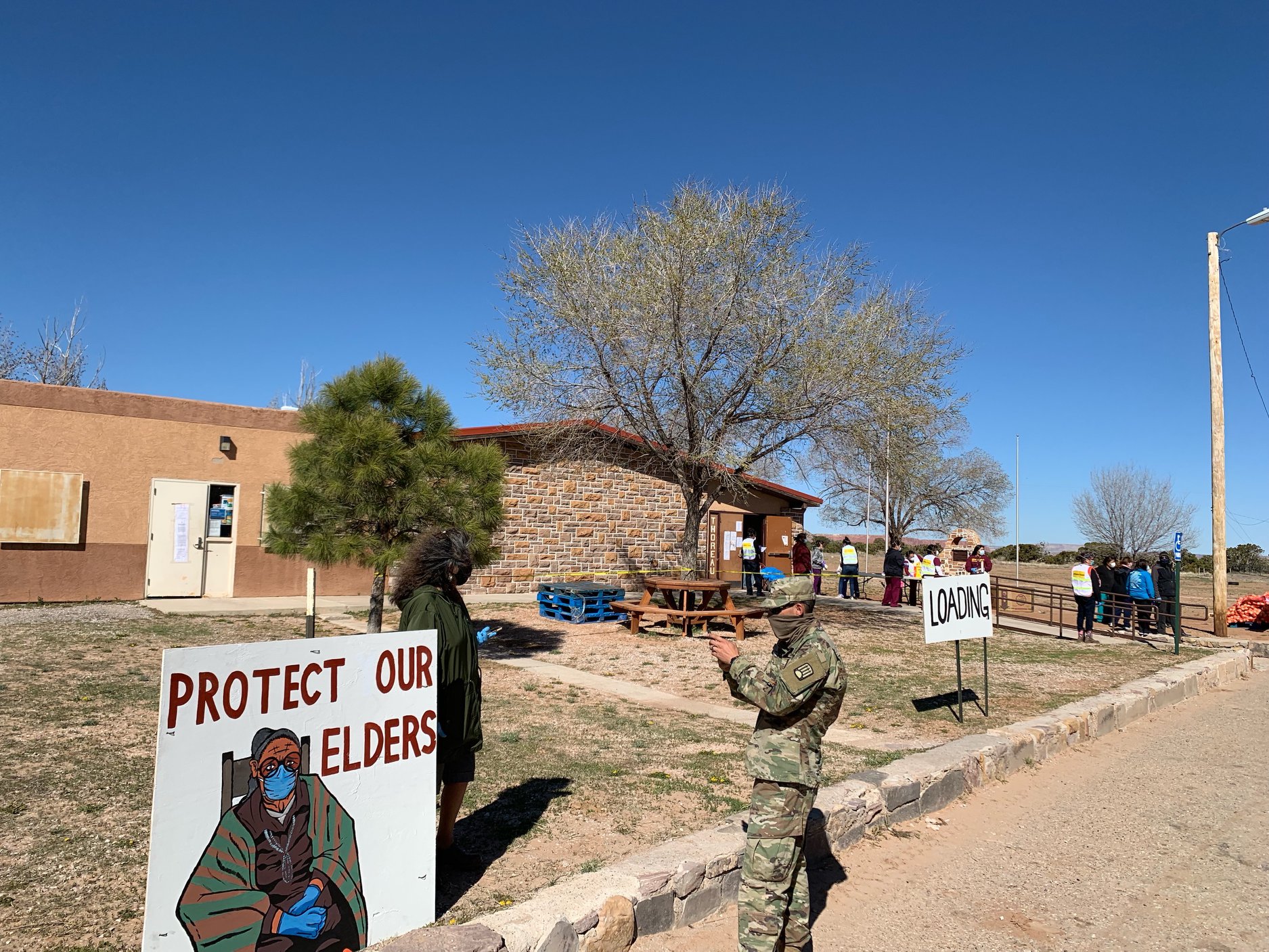“Tuŋkašila aŋpetu ki le oyate sitomŋiya wowašake ŋa wičozaŋi wičaku yo Ŋa wowačin tanka hečel oyate ki wašaka pi kte hečel uŋšiya uŋlapi yelo, Grandfather on this day all over the Universe give the people strength and good health and give us perseverance. We ask these things in a humble way”
-- Richard Two Dogs (Oglala Lakota – South Dakota)
"We call upon our defenders, our monster slayers [naayéé neezghání] from the east [ha’a’aahdéé] with the energy of lightning [atsiniltł’ish], from the south [shádi’ááhdéé] with the energy of the stone weapon [hatsool ghał], from the west [e’e’aahdéé] with the energy of the sunbeam [shá bitłʼóól] and from the north [náhookos] with the energy of the rainbow [nááts’íílid],to shield the earth surface people [nihookááʼ dineʼé] and all living beings. We will have evaded the enemy, and into the future we shall persist [naayéé’ shi siih, naayéé’ shi siih, shani’ha’há’, shani’ha’há’, t’áá aníiltso yiidzííh]. The enemy ceases to exist [páah páah, páah, páah]."
-- Michelle Kahn-John (Diné) and Anson Etsitty, Sr. (Diné) Navajo Nation, Arizona, USA
Based on what we are hearing from Tribal and state officials, traditional healers are concerned about upcoming large native social gatherings. Even though our traditional and spiritual ceremonies provide comfort, healing, and hope during this uncertain time, this virus poses a special challenge for us. Practicing our traditions in ways that conform to Centers for Disease Control and Prevention social distancing guidelines will help us carry through these difficult times while collectively contributing to a healthier society for our future. The public health threat posed by COVID-19 continues to be very high, and there is no vaccine to prevent the disease. Our Tribal communities are vulnerable. People with other health conditions, such as diabetes and high blood pressure, are at a higher risk. Ultimately, the most effective way to prevent illness is to avoid being exposed to the virus by not being around people who are sick. It is vitally important that traditional and religious leaders work closely with elected tribal officials to limit the exposure of community members to the coronavirus. It is also critical time to work with our federal partners to help slow the spread. Last fall, many traditional healers from all four directions traveled to Aurora, Colorado to participate in a Traditional Medicine Summit to express the importance of traditional healing to the U.S. Department of Health and Human Services, including the National Institutes of Health (NIH), the Centers for Disease Control and Prevention (CDC) and the Indian Health Service (IHS). This summit helped identify ways our traditional healers can respectfully collaborate on ways to integrate traditional medicine with our health care services. Today, we are being faced with new opportunities to collaborate with our federal partners in unique ways by stressing the importance of social distancing as the one proven method to slow the spread of the virus. If you must go out, remember that you can help reduce the spread of the virus if you are careful and practice social distancing strategies"Zoongide'iwin": This is the time for courage. This is the time to stay strong. The #Coronavirus is depending on you to bring it to others and we cannot let that happen if we can help it. @ArneVainioMD #COVID19 https://t.co/Dj5nURgN1i
— indianz.com (@indianz) April 14, 2020
:
• Wear a cloth face cover that covers your nose and mouth
• Continue to stay 6 feet away from others
• Do not shake hands, hug, or touch others
• Avoid touching your eyes, nose, and mouth
• Wash your hands often with soap and water for at least 20 seconds or use hand sanitizer
Together we must be vigilant in our efforts to slow the spread of infections within our tribal communities, including hand washing, staying at home, avoiding large social gatherings, and practicing social distancing. We know that these are unprecedented times, but we are all in this together. Our collective work in Indian Country has never been more important than it is today. We look forward to sustaining our healthy communities today and for future generations to come.
Indian people are resilient, and together we will get beyond this.
The Association of American Indian Physicians and traditional healers collaborated on this article.
Join the Conversation

